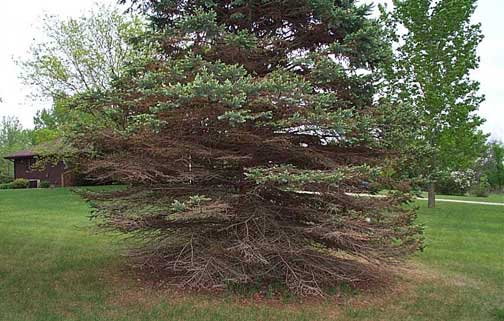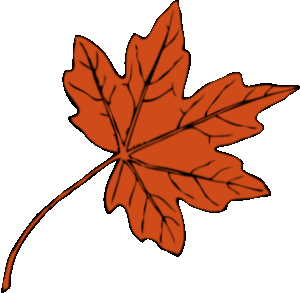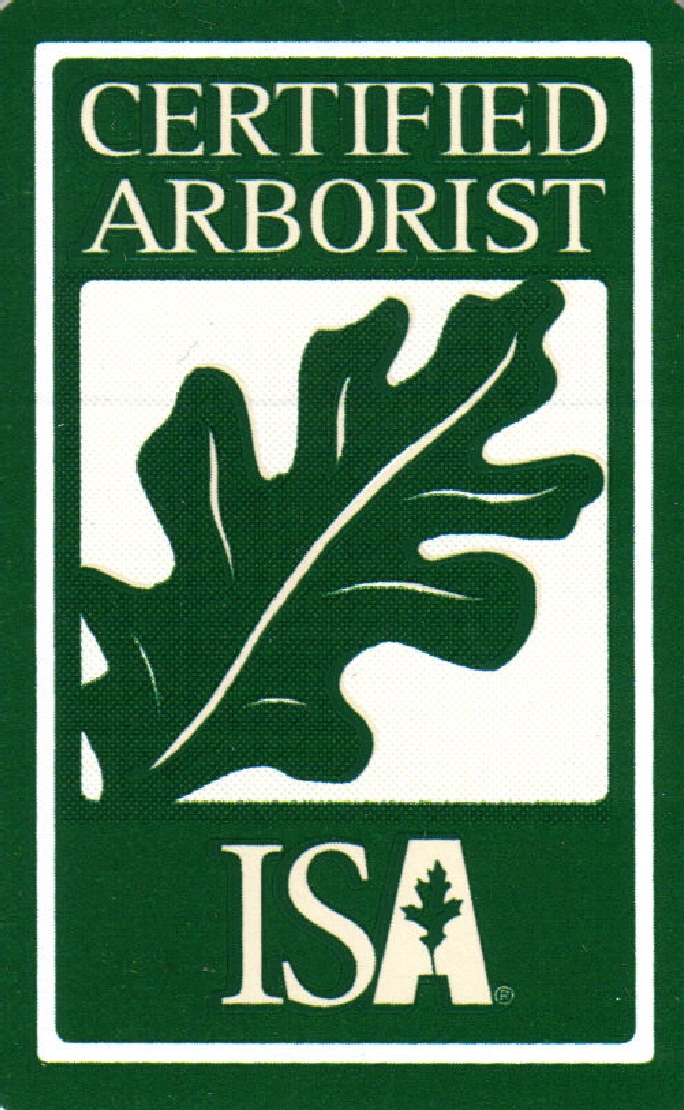Needle Blight


Needle blights are very serious fungal diseases of pine trees. Diplodia tip blight is one kind that forms in conifers. The disease generally takes shape like the two pictures to the right show. The disease spreads from the lowest branches of the tree first. Normally this disease starts on one side of the tree and works its way around slowly. Most people think it is a natural needle drop from the tree and the diseased section is removed, but conifers do not normally shed it's outer needles.
Like most fungi needle blight remains on dropped needles, so the disease cycle can continue on the tree the following season. The disease forms on the needles like shown in the bottom right hand picture and fruiting bodies form to look like a white mold. The spores are lifted up into the tree with wind and the disease continues to spread up and across the tree.
Treatment
Spraying or injections are possible methods of treatment for needle blight. This depends mostly on the time when the disease is trying to be controlled. Spring spraying applications are ideal, and need multiple treatments in one calendar year. Injections can be done from the summer to the fall and are done to treat for the following year.
Proper plans, including usage of fertilizers or PH balancing soil remedies, is also recommended to properly return trees to a healthy state. Contact an arborist today to learn more about your trees health.


